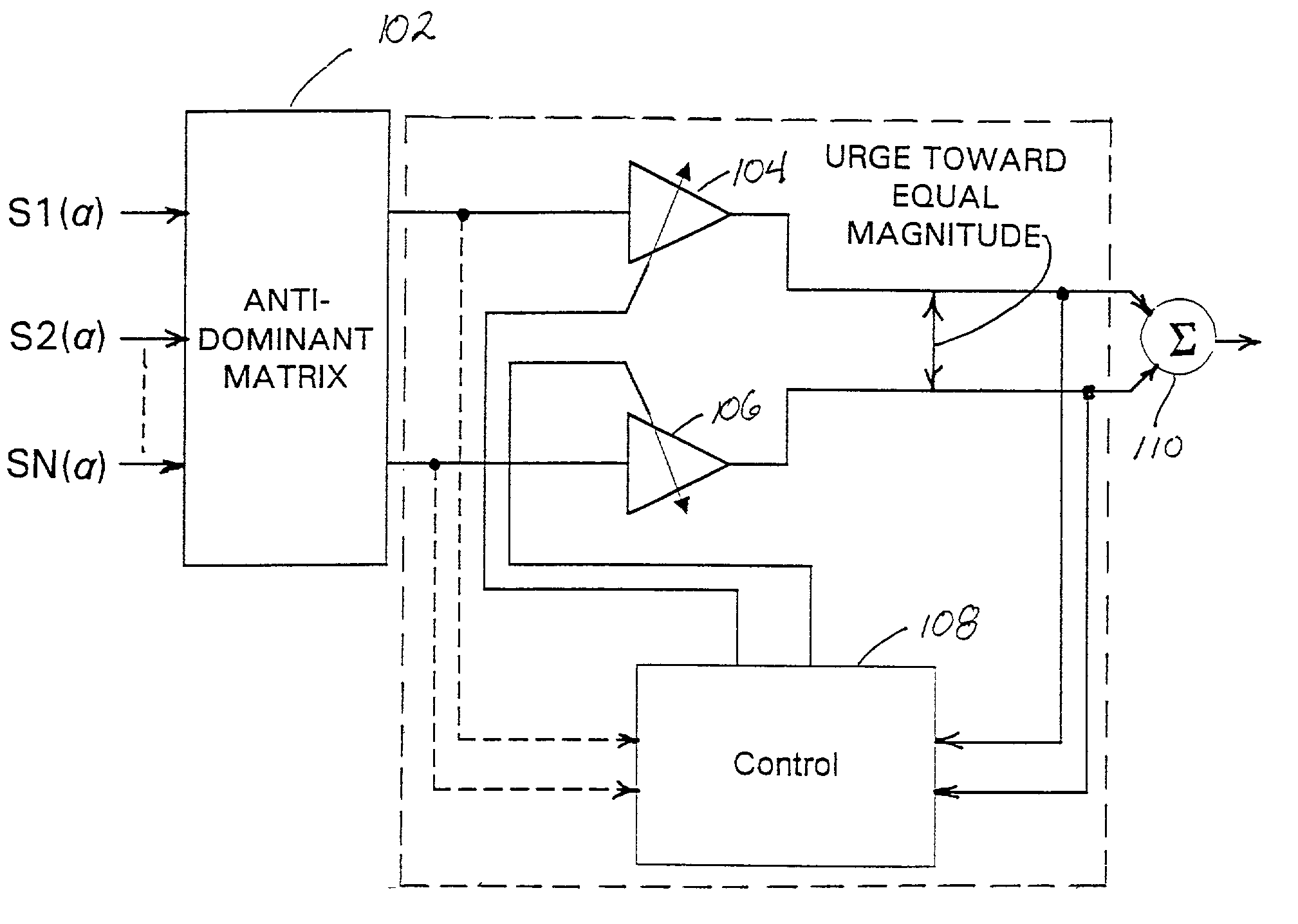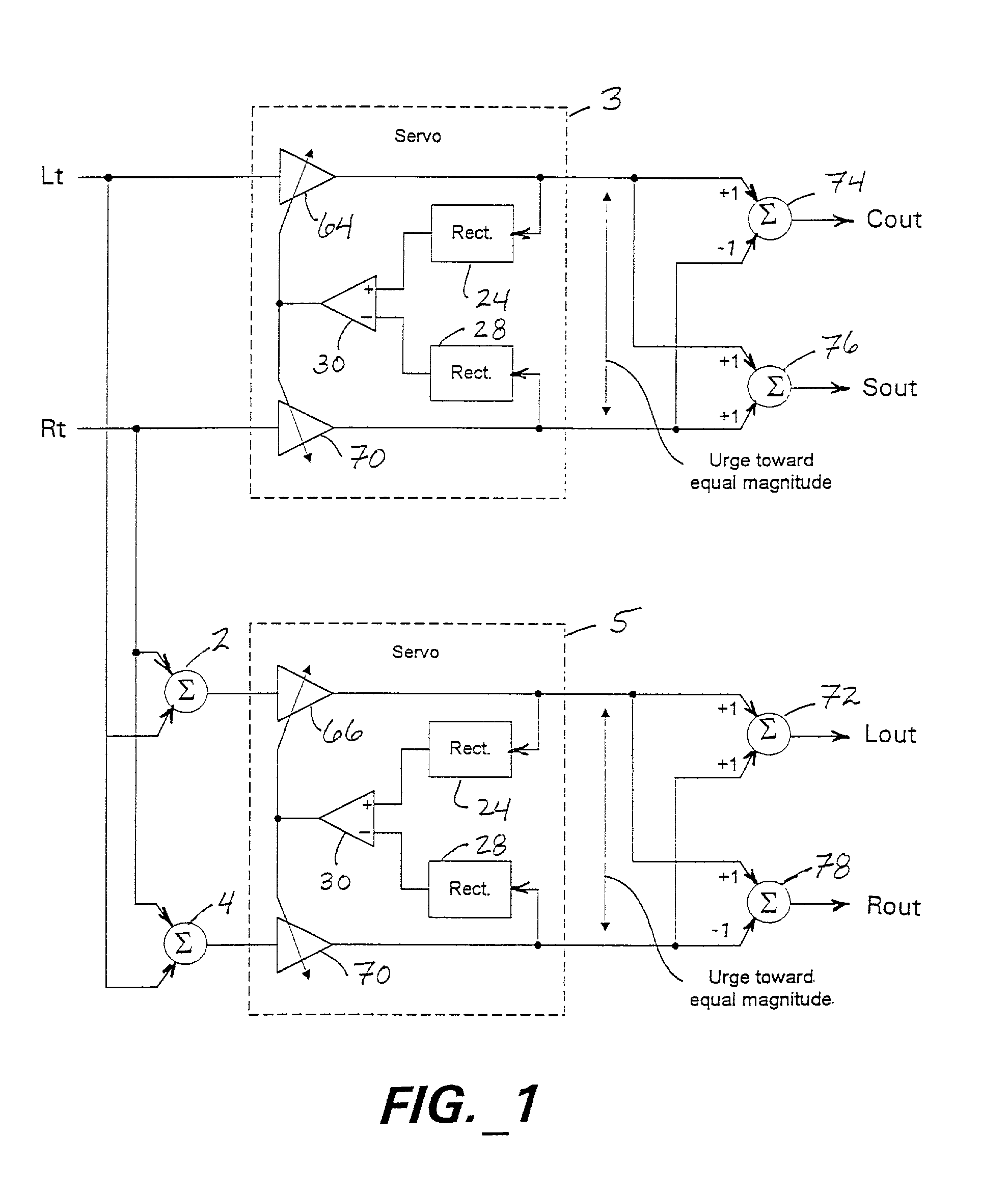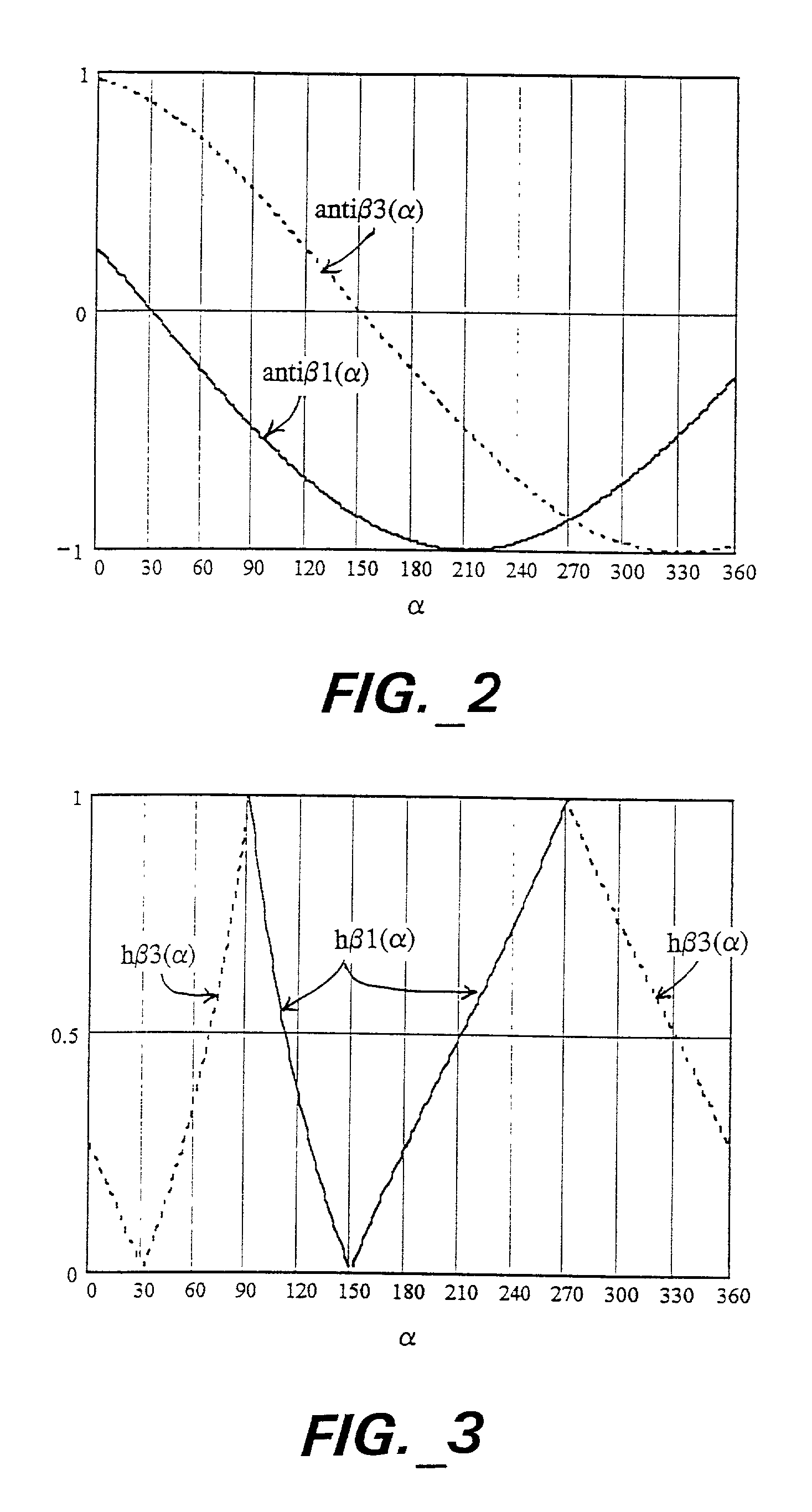Method and apparatus for deriving at least one audio signal from two or more input audio signals
a technology of audio signal and input audio, applied in the field of audio signal processing, can solve the problems of greater undesirable crosstalk between the output signals of the additional decoder, the 3 db separation between the signals associated with adjacent directions, and the disadvantage of crosstalk among the decoded audio signals
- Summary
- Abstract
- Description
- Claims
- Application Information
AI Technical Summary
Benefits of technology
Problems solved by technology
Method used
Image
Examples
Embodiment Construction
[0105]FIGS. 13 through 18 and their related descriptions are based on FIGS. 1 through 6 and their related descriptions in said Fosgate patent applications. The following descriptions of FIGS. 13 through 18 provide further details of the four-output, two-input decoder described in said Fosgate applications. Certain aspects of those decoders are relevant to the present invention and form a part of the disclosure of the present invention.
[0106]A passive decoding matrix is shown functionally and schematically in FIG. 13. The following equations relate the outputs to the inputs, Lt and Rt (“left total” and “right total”):
Lout=Lt (Eqn. 26)
Rout=Rt (Eqn. 27)
Cout=½·(Lt+Rt) (Eqn. 28)
Sout=½·(Lt−Rt) (Eqn. 29)
[0107]The center output is the sum of the inputs, and the surround output is the difference between the inputs. Both have, in addition, a scaling; this scaling is arbitrary, and is chosen to be ½ for the purpose of ease in explanation. Other scaling values are possible. The Cout output ...
PUM
 Login to View More
Login to View More Abstract
Description
Claims
Application Information
 Login to View More
Login to View More - R&D
- Intellectual Property
- Life Sciences
- Materials
- Tech Scout
- Unparalleled Data Quality
- Higher Quality Content
- 60% Fewer Hallucinations
Browse by: Latest US Patents, China's latest patents, Technical Efficacy Thesaurus, Application Domain, Technology Topic, Popular Technical Reports.
© 2025 PatSnap. All rights reserved.Legal|Privacy policy|Modern Slavery Act Transparency Statement|Sitemap|About US| Contact US: help@patsnap.com



